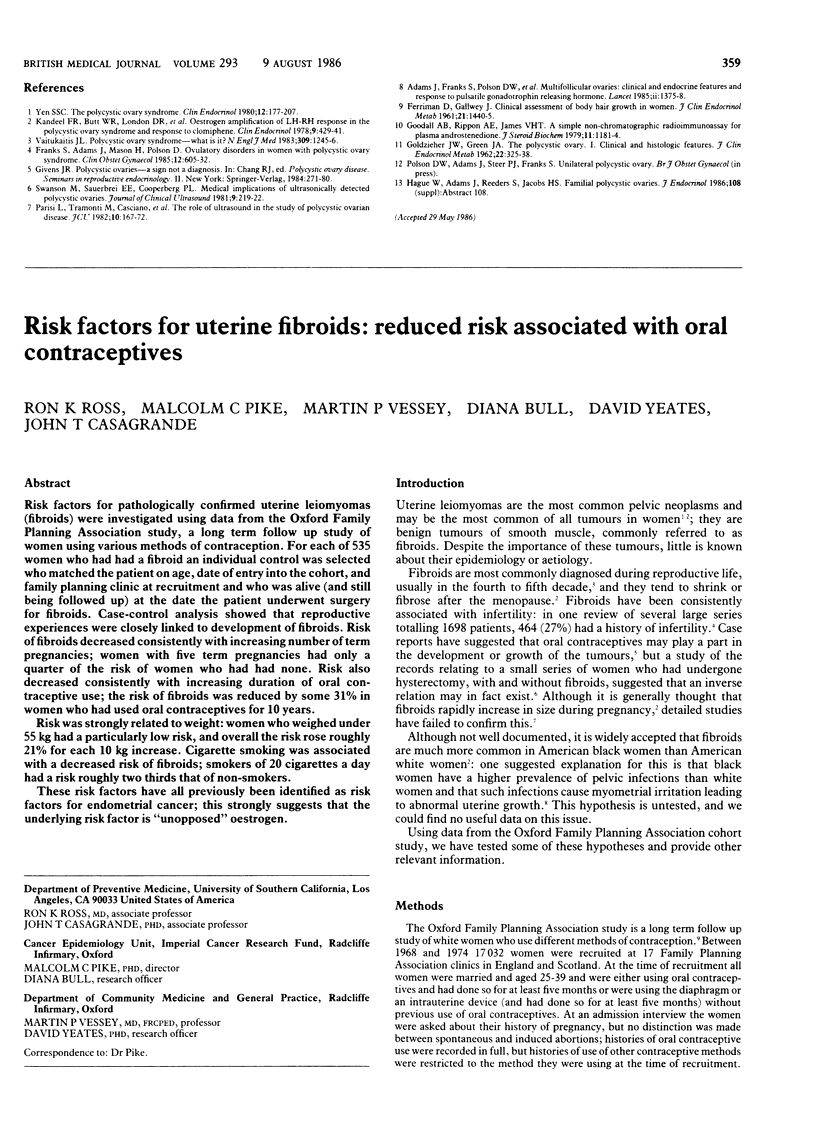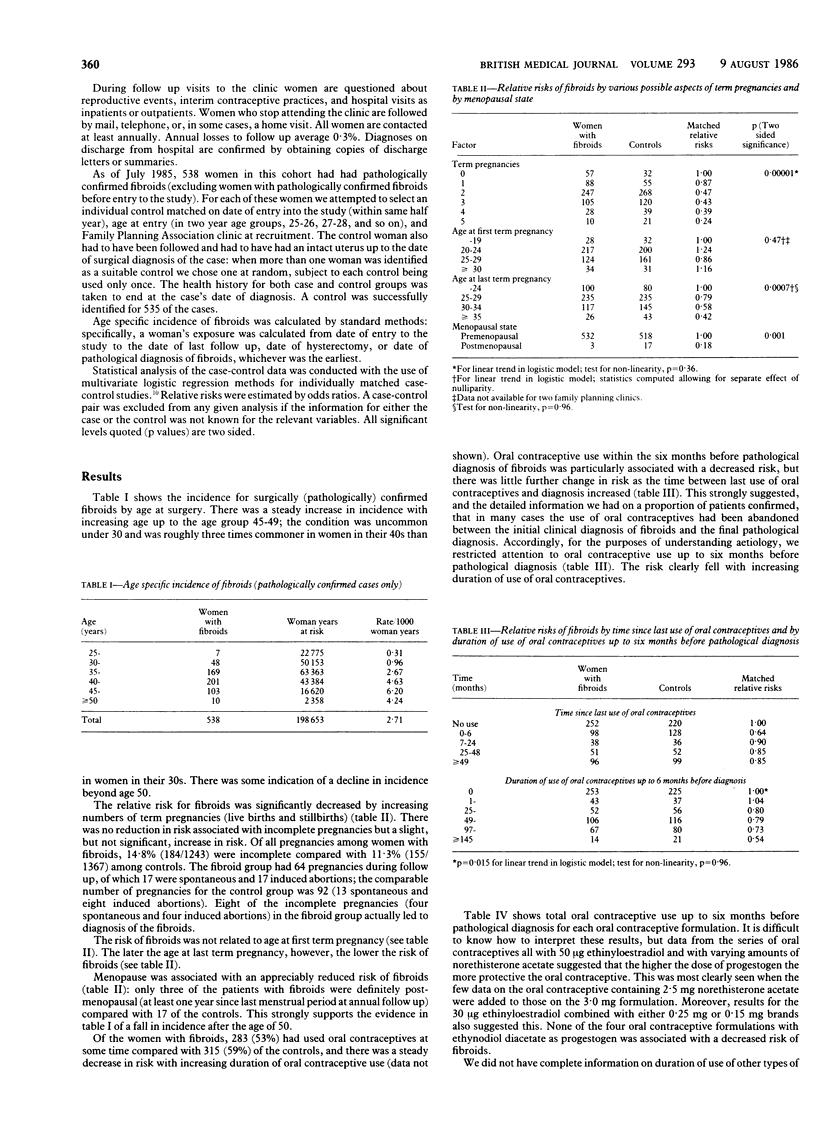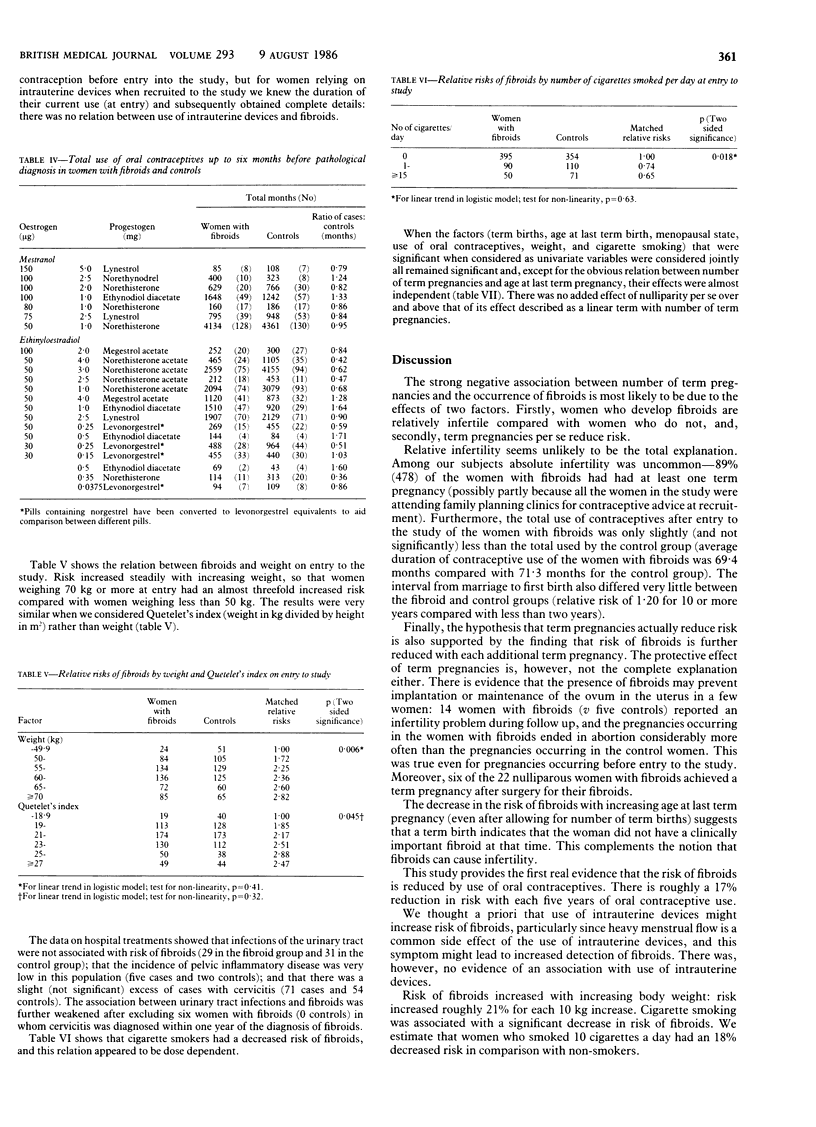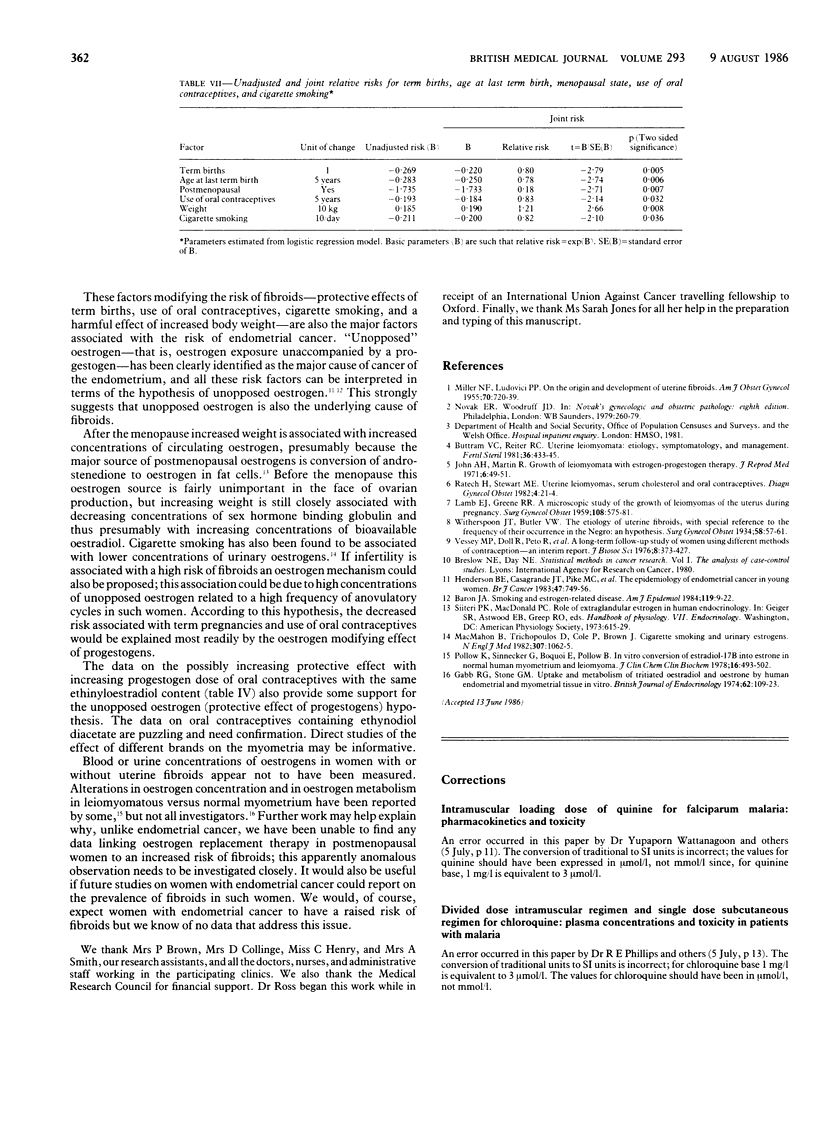Abstract
Risk factors for pathologically confirmed uterine leiomyomas (fibroids) were investigated using data from the Oxford Family Planning Association study, a long term follow up study of women using various methods of contraception. For each of 535 women who had had a fibroid an individual control was selected who matched the patient on age, date of entry into the cohort, and family planning clinic at recruitment and who was alive (and still being followed up) at the date the patient underwent surgery for fibroids. Case-control analysis showed that reproductive experiences were closely linked to development of fibroids. Risk of fibroids decreased consistently with increasing number of term pregnancies; women with five term pregnancies had only a quarter of the risk of women who had had none. Risk also decreased consistently with increasing duration of oral contraceptive use; the risk of fibroids was reduced by some 31% in women who had used oral contraceptives for 10 years. Risk was strongly related to weight: women who weighed under 55 kg had a particularly low risk, and overall the risk rose roughly 21% for each 10 kg increase. Cigarette smoking was associated with a decreased risk of fibroids; smokers of 20 cigarettes a day had a risk roughly two thirds that of non-smokers. These risk factors have all previously been identified as risk factors for endometrial cancer; this strongly suggests that the underlying risk factor is "unopposed" oestrogen.
Full text
PDF



Selected References
These references are in PubMed. This may not be the complete list of references from this article.
- Baron J. A. Smoking and estrogen-related disease. Am J Epidemiol. 1984 Jan;119(1):9–22. doi: 10.1093/oxfordjournals.aje.a113730. [DOI] [PubMed] [Google Scholar]
- Buttram V. C., Jr, Reiter R. C. Uterine leiomyomata: etiology, symptomatology, and management. Fertil Steril. 1981 Oct;36(4):433–445. doi: 10.1016/s0015-0282(16)45789-4. [DOI] [PubMed] [Google Scholar]
- Gabb R. G., Stone G. M. Uptake and metabolism of tritiated oestradiol and oestrone by human endometrial and myometrial tissue in vitro. J Endocrinol. 1974 Jul;62(1):109–123. doi: 10.1677/joe.0.0620109. [DOI] [PubMed] [Google Scholar]
- Henderson B. E., Casagrande J. T., Pike M. C., Mack T., Rosario I., Duke A. The epidemiology of endometrial cancer in young women. Br J Cancer. 1983 Jun;47(6):749–756. doi: 10.1038/bjc.1983.127. [DOI] [PMC free article] [PubMed] [Google Scholar]
- LAMB E. J., GREENE R. R. A microscopic study of the growth of leiomyomas of the uterus during pregnancy. Surg Gynecol Obstet. 1959 May;108(5):575–581. [PubMed] [Google Scholar]
- MILLER N. F., LUDOVICI P. P. On the origin and development of uterine fibroids. Am J Obstet Gynecol. 1955 Oct;70(4):720–740. doi: 10.1016/s0002-9378(16)37829-2. [DOI] [PubMed] [Google Scholar]
- MacMahon B., Trichopoulos D., Cole P., Brown J. Cigarette smoking and urinary estrogens. N Engl J Med. 1982 Oct 21;307(17):1062–1065. doi: 10.1056/NEJM198210213071707. [DOI] [PubMed] [Google Scholar]
- Pollow K., Sinnecker G., Boquoi E., Pollow B. In vitro conversion of estradiol-17beta into estrone in normal human myometrium and leiomyoma. J Clin Chem Clin Biochem. 1978 Sep;16(9):493–502. doi: 10.1515/cclm.1978.16.9.493. [DOI] [PubMed] [Google Scholar]
- Ratech H., Stewart M. E. Uterine leiomyomas, serum cholesterol, and oral contraceptives. A preliminary study of epidemiologic differences in Los Angeles, California and Albany, New York. Diagn Gynecol Obstet. 1982 Spring;4(1):21–24. [PubMed] [Google Scholar]
- Vessey M., Doll R., Peto R., Johnson B., Wiggins P. A long-term follow-up study of women using different methods of contraception--an interim report. J Biosoc Sci. 1976 Oct;8(4):373–427. doi: 10.1017/s0021932000010890. [DOI] [PubMed] [Google Scholar]


